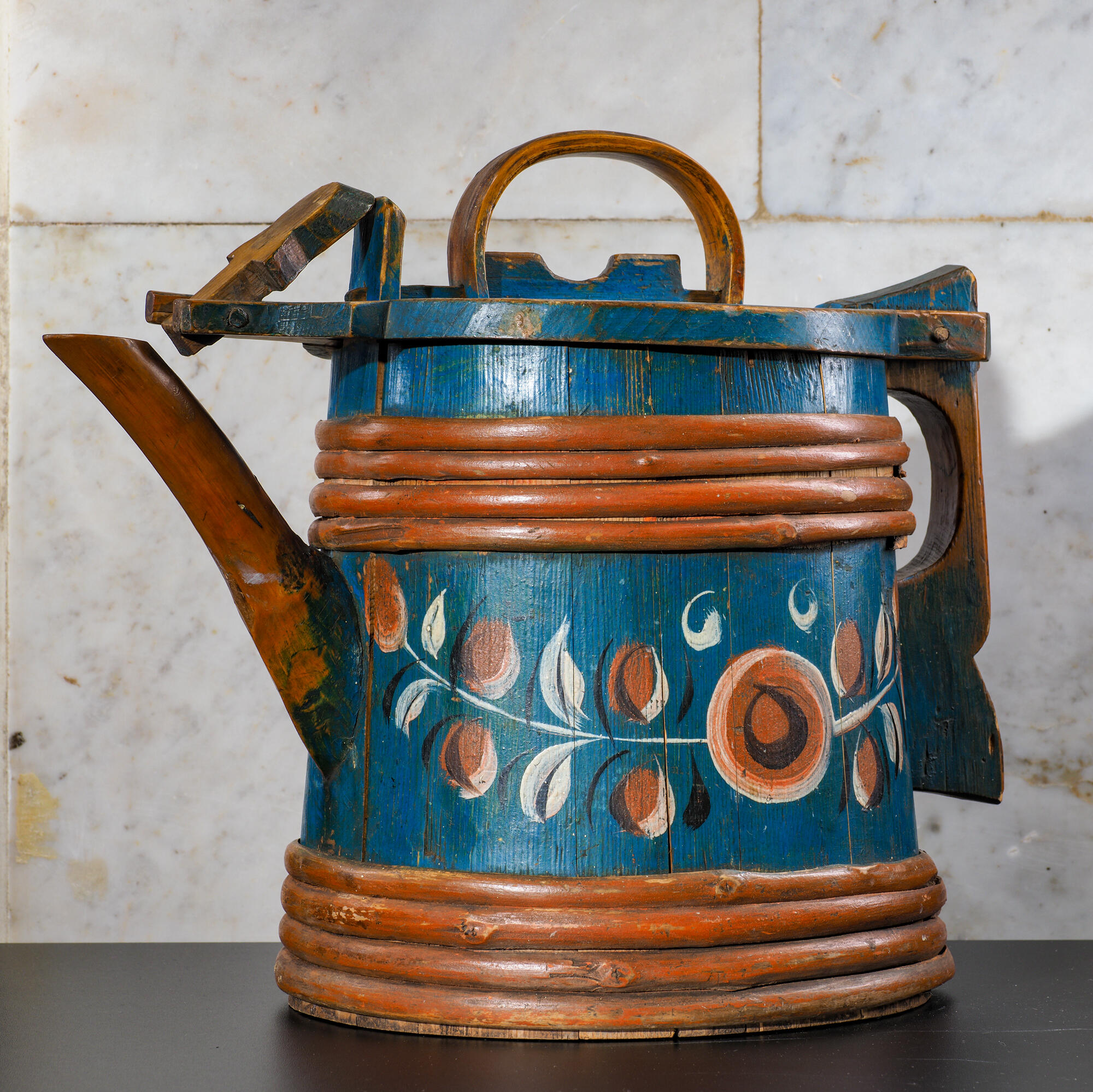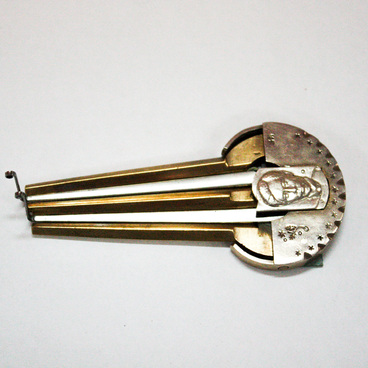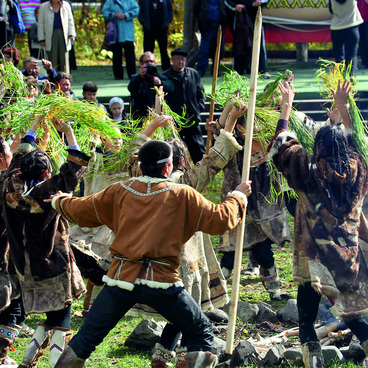Obvinsk painting is a prominent phenomenon in the folk painting tradition of the Kama region. In the 19th — early 20th century, wooden utensils were decorated with paintings: spinning wheels, cooperage, toys. As a rule, “the Obvinsk rose” was depicted in the center of the composition, and floral patterns — grass, long fluffy stems and fruits — filled the remaining space.
The time and exact place of origin of this picturesque craft of the Obva River district is unknown. The very first painted spinning wheels date back to the 1870s.
In the early monuments of Obvinsk painting, one can detect various connections with the art of the Russian North. This is a scenic manner of painting, where wet colors are mixed directly on the painted surface, which creates transitions from color to color. It is also distinguished by the highlights on top of the underpainting and placement of the main motif (two or three flowers and fruits) on the symmetry axis. A characteristic feature of the Obvinsk painting is an eight-petalled star-flower. The same star could be seen in the works of draftsmen, icon painters and painters of the Vyg Community of Old Believers. In the 18th and 19th centuries, Vyg workshops were a major folk-art center of the Olonets Governorate.
In the 1850s, when the Old Believers were once again persecuted, the Community was disbanded, and the craftsmen were forced into hiding. Some of them could have moved to the Kama region. It is plausible that one of the Vyg painters contributed to the development of the painting craft in the Obva River district.
The time and exact place of origin of this picturesque craft of the Obva River district is unknown. The very first painted spinning wheels date back to the 1870s.
In the early monuments of Obvinsk painting, one can detect various connections with the art of the Russian North. This is a scenic manner of painting, where wet colors are mixed directly on the painted surface, which creates transitions from color to color. It is also distinguished by the highlights on top of the underpainting and placement of the main motif (two or three flowers and fruits) on the symmetry axis. A characteristic feature of the Obvinsk painting is an eight-petalled star-flower. The same star could be seen in the works of draftsmen, icon painters and painters of the Vyg Community of Old Believers. In the 18th and 19th centuries, Vyg workshops were a major folk-art center of the Olonets Governorate.
In the 1850s, when the Old Believers were once again persecuted, the Community was disbanded, and the craftsmen were forced into hiding. Some of them could have moved to the Kama region. It is plausible that one of the Vyg painters contributed to the development of the painting craft in the Obva River district.



